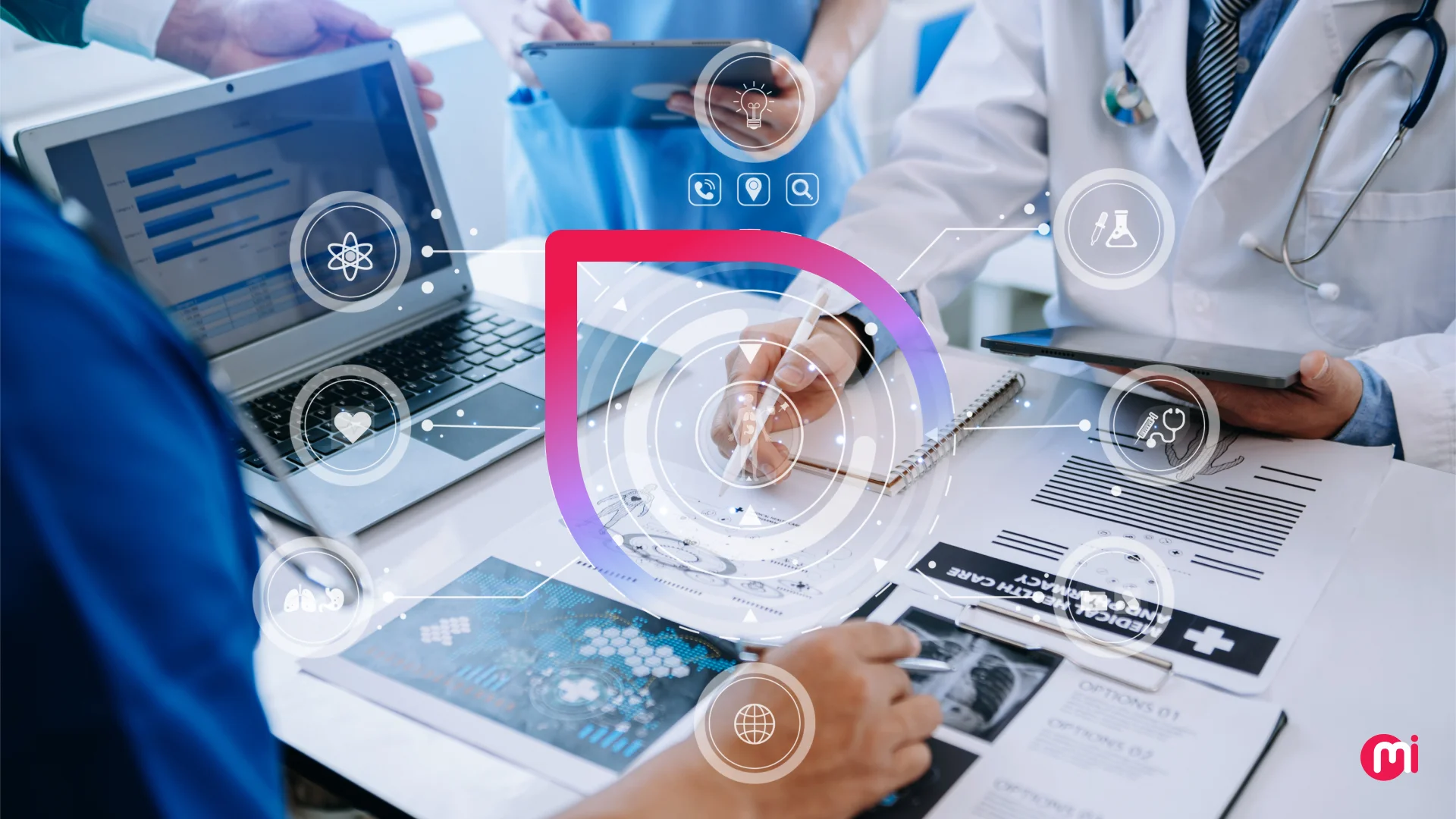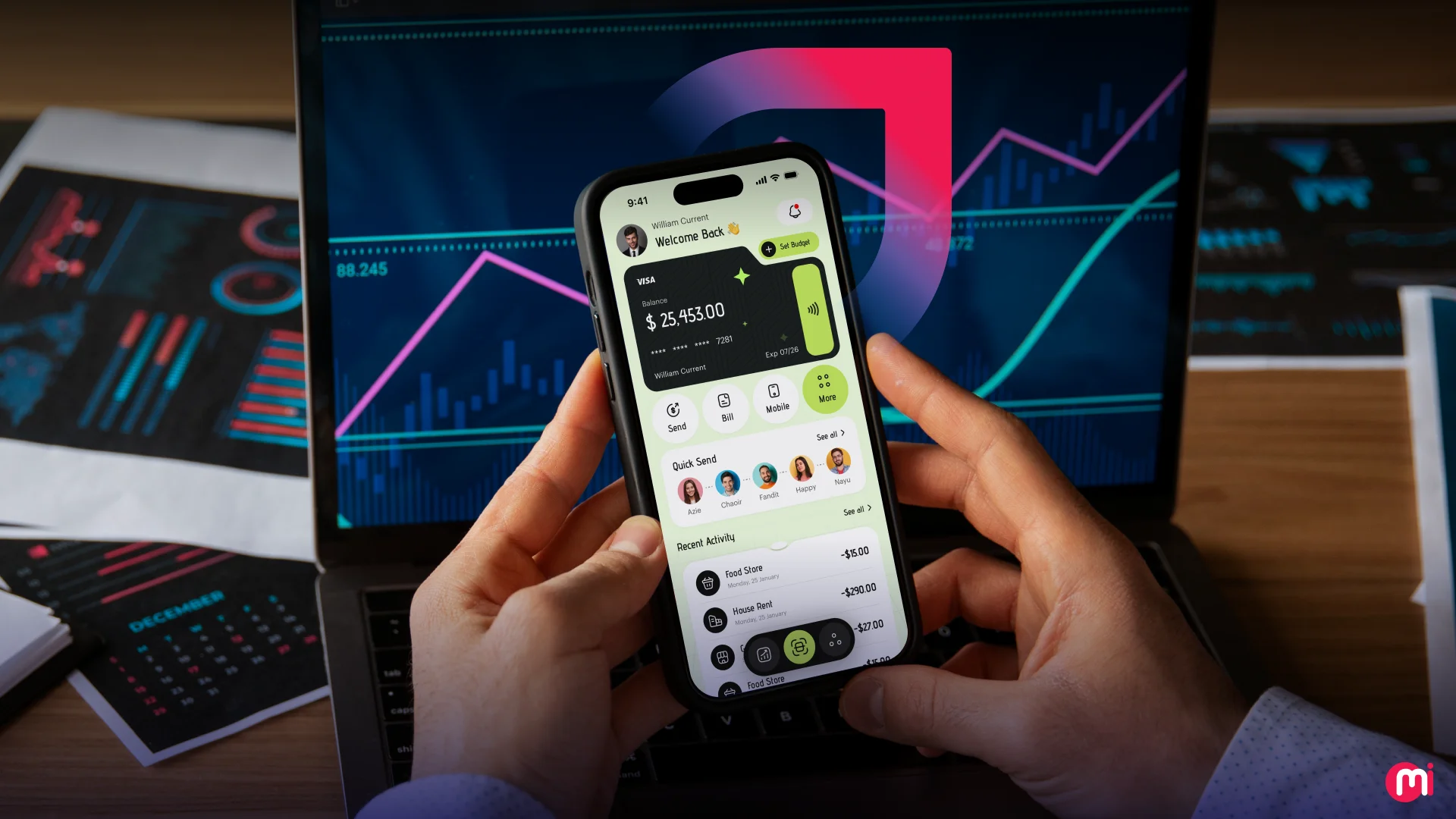Top Software Development Trends Shaping the Future of Tech
- Software
- November 22, 2024
AI-augmented software development is changing how you create software, platform engineering increases the self-sufficiency of developers, cloud and edge computing enhance scalability and performance, and much more. These buzzwords can lead to anxiety about whether your competitors are using these software development trends while you’re missing out. Well, this blog post lists 15 of the latest software development trends for 2025 that you must consider adopting to stay ahead of the curve. It also provides insights into what each software trend has to offer for CEOs and CTOs.
Innovation in technology evolves at lightning speed.
Just a decade ago, 4G was making its debut, augmented and virtual reality (AR/VR) were confined to gaming and entertainment, and AI was primarily used for chatbots and recommendation engines. IoT was just emerging, home IoT devices were gaining popularity, and cloud computing was becoming mainstream.
Fast forward to today, and these technologies have matured beyond their initial boundaries. AI, IoT, AR/VR, and cloud computing are now applied across industries in ways that were once unimaginable. The possibilities are no longer limited by technology; imagination is the only constraint.
This shift has driven software development decision-makers into a constant search for emerging technologies and innovations to stay competitive.
Staying ahead of the curve in technology is no longer optional—it’s a strategic necessity.
What’s trending?
This term has become integral to strategic planning, as tech decision-makers recognize that they cannot afford to ignore the innovations their competitors are adopting. The pressure to incorporate the latest trends, tools, and practices into every facet of software development is greater than ever.
The need to stay current has fueled a relentless pursuit of the latest technologies, practices, and tools. This blog aims to provide you with insights into the most relevant software development trends that you should consider adopting in order to maintain a competitive edge.
Read on to explore the latest software development industry trends:

15 Software Development Trends in 2025
In today’s fast-paced digital landscape, software development is no longer just about writing code. It’s about embracing innovation, adapting to new technologies, and continuously evolving to meet the demands of the market. The tools, methodologies, and frameworks that developers rely on are changing at a rapid pace, and staying up-to-date with these advancements is essential for success.
Here are 15 such trends in software development to watch for:
1. AI-Augmented Software Development
Beyond integrating AI to enhance the capabilities of software or apps to offer more value to your users, AI in software development is changing how we develop software and apps in the first place. Here is how:
- Supporting DevOps workflows with AI-powered automation resulting in AIOps
- Utilizing GenAI tools in the requirements planning phase
- Implementing AI coding assistants or copilots in software creation
- Leveraging large language models and GenAI models across the software development lifecycle(SDLC)
- Integrating AI tools into the developer’s toolkit to provide intelligent, real-time feedback and suggestions
- Using AI to facilitate design-to-code
- Automating testing using AI-powered testing tools
Also Read: Top DevOps Trends and Future Scopes
2. Platform Engineering
According to Gartner, By 2026, 80% of software engineering organizations are expected to establish platform teams. This has become the new next software development trend. These teams would serve as internal providers of reusable services, components, and tools to streamline application delivery.
Closely related to optimizing Developer Experience (DevEx), platform engineering provides self-service portals that internal development teams can use to reduce cognitive load. These tools empower developers to create, update, and deploy software faster than ever.
Here are some trending platform engineering use cases to consider adopting:
- Platform as a Product
- GitOps Workflow Automation
- Container Visualization
- Platform Orchestration
- SaaSification of Products and Platforms
This leads us to another important trend in software development: Developer Experience.
3. AI-Empowered Applications
In recent years, while the availability of data increased, much of it could not be used to its full potential. Now, this data can be leveraged to create AI and ML models that automate various functions by embedding intelligence directly into software.
Here are some key trends in embedding AI and ML models into AI-powered software:
- Recommendation Engines
- Robotic Process Automation (RPA)
- AI as a Service (AIaaS) Integration
- Generative AI Integration
- Chatbots and Virtual Assistants
- AI-Powered Data Analysis
- AI Integration in IoT Solutions
- AI Governance Functions
- Data-Enhanced Applications with Embedded AI and ML
There’s even more to these AI trends, including digital twins, shadow AI, AI hallucination policies, API-driven AI, and more. To dive deeper read our blog on the top AI trends.

4. Developer Experience(DevEx)
DevEx not only directly impacts developer productivity and software time-to-market but also plays a crucial role in developer retention. This is why Gartner forecasts that, by 2027, organizations that implement formal developer experience (DevEx) initiatives will be twice as likely to retain their developers compared to current levels.
That’s the reason why this software development trend has made the way to the list of top software development trends in 2025.
However, only 44% of developers believe that leaders are fully aware of the issues contributing to a poor developer experience. This presents an opportunity for organizations to address these gaps by incorporating AI tools, reevaluating productivity metrics, promoting developer autonomy through platform engineering, and more.
5. Digital Immune System(DIS)
Reducing downtime is a critical priority for most companies with business-critical systems. By 2025, organizations investing in digital immunity are expected to improve customer satisfaction by reducing downtime by 80%. This software development trend cannot be ignore due to the fact that competition in software industry is intense and chances of survival are getting harder day by day.
Downtime can stem from various issues, including security breaches, glitches, bugs, and more. Regardless of the cause, its impact can lead to customer dissatisfaction and significant costs. For example, on April 5, 2022, 775 Atlassian customers lost access to their products, with some experiencing outages that lasted up to 14 days. Similarly, a software bug caused Equifax to provide inaccurate credit information for nearly three weeks, while Tesla had to recall 59,000 vehicles due to a software glitch.
These challenges can be minimized with a robust Digital Immune System (DIS). A DIS integrates best practices and technologies across development, design, testing, and more to reduce system failures and improve reliability.
Here are the six pillars for building a strong DIS:
- AI-augmented Testing
- Chaos Engineering
- Observability
- Site Reliability Engineering (SRE)
- Auto-remediation
- Software Supply Chain Security
6. Immersive-reality Technologies
Following Apple’s launch of its new AR headset, the Apple Vision Pro, several companies have begun leveraging the technology to offer consumers a more immersive product experience. This software development trend is being explored across various industries, from automotive to entertainment.
For example, Porsche has partnered with Meta to use its Quest 3 MR headsets for event presentations and vehicle walkthroughs. Meanwhile, Disney acquired a $1.5 billion stake in Epic Games and announced a collaboration to build a new virtual entertainment universe.
The immersive technologies on the rise include:
- Augmented Reality (AR)
- Virtual Reality (VR)
- Mixed Reality (MR)
- Spatial Computing
- On-body and Off-body Sensors
- Location Mapping Software
7. Cloud Computing
We’ve already experienced the benefits of using cloud computing in terms of scalability, flexibility, cost, and more. As cloud technology continues to evolve, it will further empower us to reimagine its potential.
Here are the cloud computing trends you need to watch for:
- Enterprises adopting AI as a service (AIaaS)
- Edge computing integrating with the cloud
- Hybrid and multi-cloud strategies
- Sustainable cloud solutions
- Serverless computing
- Quantum computing becoming widely accessible through the cloud
- GenAI changing how we create, deploy, and use cloud services
- Supercloud emerging as the ultimate data fabric
To explore these trends and more in detail, read our blog on Cloud Computing Trends.
8. Machine Learning Operations (MLOps)
Inspired by DevOps and the increasing use of ML models in software, MLOps is a popular approach to simplify ML lifecycle management.
Born at the intersection of DevOps, data engineering, and machine learning, this set of practices fosters collaboration and communication between data scientists and operations teams. MLOps can be applied across all stages of the lifecycle, from data gathering to model development, deployment, and monitoring.
Key use cases of MLOps include:
- Continuous integration/deployment (CI/CD)
- Data management & governance in MLOps
- Automated testing & validation
- Real-time model monitoring and alerting
- Scalability & resource management in MLOps
9. Expansion of the IoT
The Internet of Things (IoT) is transforming how we connect with and interact with the world around us. As the number of interconnected devices continues to rise, IoT’s potential to reshape industries is expanding. Coupled with other emerging technologies, IoT software is evolving rapidly, driving innovation across sectors.
Key IoT trends in software to watch:
- Edge Computing in IoT
- 5G Connectivity for IoT
- IoT in Healthcare
- AI Integration in IoT Devices
- Digital Twins for Predictive Maintenance
- Blockchain for Enhanced Security in IoT
10. Internet of Behavior (IoB)
The concept of IoB refers to a system that leverages sensors to collect and monitor user data, which, with the use of next-gen technologies, is then analyzed to predict human behaviors.
In terms of numbers, the market size of IoB is forecasted to grow at a CAGR of 23.6% during the period from 2023 to 2030, showcasing a rising trend in businesses using user behavior data across industries.
To shape personalization or offer a customized user experience, the key is to understand human behavior. Hence, IoB will play a crucial role in various phases of software development, where strategic decision-making teams aim to influence user behavior or shape how users interact with their software or digital solutions.
In the coming years, IoB will also be integrated with other technologies like AI, ML, IoT, and more to enhance accuracy and efficiency in automation, powered by predictive analytics.
However, businesses need to understand that IoB can have ethical and societal implications, depending on the goals and outcomes of its use.
11. Increased Investment in Progressive Web Apps
Faster, more reliable, and more engaging web experiences that mimic native apps are becoming the new standard. As businesses increasingly invest in Progressive Web Apps (PWAs) to deliver seamless cross-device experiences without the overhead of traditional mobile apps, industries are seeing notable benefits.
PWAs typically drive a 68% increase in traffic, use significantly less device storage—25 times less than native apps—and load up to 15 times faster, making them a preferred choice for businesses and users alike. Major tech giants like Apple and Google are also endorsing PWA support, further solidifying their importance in the digital landscape.
12. Emergence of FinOps and GreenOps
With the increasing use of cloud resources, concerns are growing not only about cost reduction but also about environmental sustainability due to the carbon emissions associated with these resources. It may come as a shock, but the public cloud now has a larger carbon footprint than even the airline industry, which in fact is one of the most carbon-heavy sectors around!
To put this in perspective, a single public data center can consume as much electricity as 50,000 homes, with an annual energy use of 200 terawatt-hours—more than the entire consumption of some countries. As consumer demand for greener practices rises and regulations tighten (such as Germany’s Energy Efficiency Act, which mandates a 26.5% reduction in emissions by 2030), the push toward GreenOps is accelerating.
This shift has brought sustainable software development into the spotlight. FinOps, a set of practices and principles, helps organizations manage and optimize their cloud infrastructure costs, while GreenOps focuses on enhancing the environmental sustainability of software development and operational processes, emphasizing the reduction of energy use, carbon emissions, and waste.
Together, FinOps and GreenOps enable software development companies to reduce both costs and environmental impact, aligning financial goals with sustainable practices.
13. DevSecOps
Ensuring efficiency in addressing software security issues is an essential part of the software development process. DevSecOps is a set of tools and processes that empower software development teams to integrate security practices into every aspect of the software development lifecycle (SDLC).
Derived from development, security, and operations, it extends DevOps by embedding security and enhancing cybersecurity throughout the process.
However, when it comes to the difference between DevOps and DevSecOps, the two differ significantly in terms of their key objectives. For DevOps, the focus is on development efficiency, while for DevSecOps, it is on integrating security into every aspect of the Software Development Life Cycle (SDLC).
Some key DevSecOps trends in software development include:
- ML integration in DevSecOps
- Use of AI co-pilots
- Integration of AI-driven security in DevSecOps
- Pushing DevSecOps into the ETL pipeline
- Embedding security controls and automated testing in the CI/CD pipeline
- Use of policy as code, specifically Open Policy Agent
- Merging model-based systems engineering with DevSecOps
- Prioritizing containerization in deployments
- Integrating quantum computing with DevSecOps
14. Microservice Architecture
By breaking down complex applications into smaller, independent services, microservice architecture enables organizations to develop, deploy, and scale software more quickly and efficiently. This approach has reshaped the software development landscape, offering businesses greater flexibility and scalability than ever before.
The core features of microservices—modularity, scalability, and fault tolerance—are driving their adoption across industries such as finance, retail, and healthcare. This model helps businesses manage complexity, as each microservice can be built, updated, and maintained independently, resulting in faster development cycles and more agile operations.
Here are some key trends in microservices architecture:
- Creating synergy between agile and microservices
- Integration of AI and microservices
- Adoption of service meshes for managing microservices
- Use of serverless architecture
15. Use of Blockchain Beyond Finance
Blockchain is not a new technology when it comes to finance and cryptocurrencies. However, with the rise in the use of cloud networks and the search for affordable alternatives to on-premise solutions, Blockchain-as-a-Service (BaaS) is emerging as a major software development trend.
Blockchain trends in software include:
- IoT with blockchain technology
- NFTs for business
- Blockchain-as-a-Service
- Growth of DeFi
The key industries set to benefit from blockchain’s decentralization, transparency, security, traceability, and more include:
- Supply chain management
- Healthcare
- Real estate and property management
For more such trends, read Top 15 Blockchain Technology Trends to Follow!
Innovate and Scale Faster with MindInventory’s Software Development Expertise
We are a trusted custom software development company with a splendid portfolio of projects, proving the expertise of our team. From ideation and design to development, deployment, and ongoing support, we offer end-to-end software development services. Whether it’s custom web applications, mobile solutions, or advanced enterprise software, we leverage the latest tools and frameworks to create innovative and scalable solutions that align with your business goals.
If you’re looking to hire software developers, designers, and testers proficient in the latest programming languages, frameworks, and tools, you’ve come to the right place. Our team has worked on a wide range of projects and has hands-on experience in implementing the latest software development trends.
Notable projects include:
Multi-vendor food ordering, delivery, and management platform: We developed a high-performance PWA and created a plugin that allows restaurants to easily integrate the API into their existing systems.
Practice management solution: A solution where we addressed the customer’s challenges by implementing advanced technologies, including AI, to enhance functionality and improve the user experience.
If you’re ready to bring your software development project to life and harness the power of innovation, let’s connect!
FAQs on Software Development Trends.
The trending software development tools include GitHub, Jira, ClickUp, Collaborator, Studio 3T, IntelliJ IDEA, Microsoft Visual Studio, Azure, and many more.
The trending technologies in software development include Generative AI, Quantum Computing, AR/VR, IoT, Edge Computing, Serverless Computing, and more.













